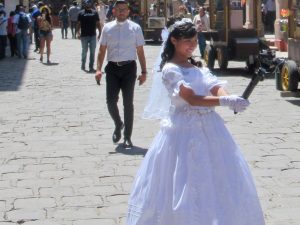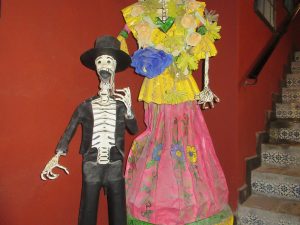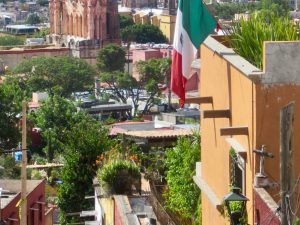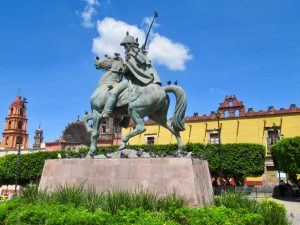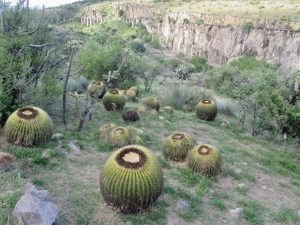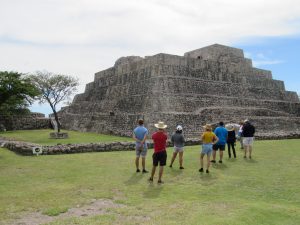Where’s the Funny? Newsletter
Volume 1: November 2019
WELCOME!
Ever since my parents wedged me over the drive shaft tunnel – you know, that annoying hump down the center of old cars – on massive road trips in our old sky blue Chevrolet station wagon, I have been in search of my own space. While my three older sisters rode comfortably, in front between mom and dad or in full repose in the way back, my tiny 8-year-old body spent 17 hours stuck in a six-inch gap, praying that those NoDoz caffeine pills my dad popped incessantly on that modest first leg – say, from Cincinnati, Ohio, to Rapid City, South Dakota – would keep him awake. We’d leave suburban Terrace Park at, like, 3:45 am (sharp!), just so we could make it to the KOA in time for, well … nothing.
Now, after nearly 70 countries, this fully growed up man adult thinks he may have found that elusive space in “Where’s the Funny?” And I am privileged to share it with you – all 24 of you, at last count. Please don’t unsubscribe yet, I’m not finished.
This is the first of what I am sure will be an ever evolving effort to share a little bit of practical, unpretentious (hopefully) travel insight with readers and, more importantly, have some fun. I am not being paid. I have no sponsors. And – my sisters can attest to this – I have never had any influence over anything … except, just maybe, our cat, Leroy. I write these words because I am passionate about travel. And in doing so, I hope some of this passion rubs off on you. The first Tuesday of every month. Until the end of time. Or 2019. Enjoy!
WHERE'S THE FUNNY?
In Mexico, symbols of death are all around – and that's the point
The first place to look for funny in Mexico is in the news. Strike that. That’s not funny at all. But dig a little deeper and you’ll find that Mexico has a really unique sense of humor, and it can be pretty darn funny.
Take Bumblebee Man, from TV’s The Simpsons, for instance. He is based on El Chapulín Colorado (“The Red Grasshopper”), a character created by Mexican comedian Roberto Gómez Bolaños (aka Chespirito, or “Little Shakespeare”). Then there’s “lucha libre,” a distinctly Mexican style of professional wrestling where participants wear colorful masks and fly across the ring in sort of an acrobatic theater. There’s an excellent documentary on that very subject, called “Nacho Libre.”
But I want to dig even deeper. Past expensive tequilas, which are fundamentally hilarious – on principle alone. And deeper still. To the one question about Mexico that has perplexed me for decades: What is up with all the skulls and skeletons? They are absolutely everywhere! In the bakery. At the appliance store. On tiles for your bathroom (see photo, at right).
My initial impression (aka stereotype): Mexicans are obsessed with death. I mean, just look at the Día de los Muertos (“Day of the Dead,” October 31-November 2) hullaballoo. What’s that ruckus all about? Luckily, I’m actually in Mexico. Why don’t I just ask someone and find out?
What I learned was this: Day of the Dead is a celebration. People get together to remember friends and family who have died. The idea is to wake up the souls of the departed, then support them on their spiritual journeys.
But first, you need to attract the souls. To do this, people set up trippy little alters with their loved ones’ favorite items. Uncle Alberto always had a pint of tequila in his pocket. Little Ana Maria loved her Barbie Inspiring Women™ Frida Kahlo doll. Freaky Felipe enjoyed films of an adult nature. You get the picture?
So who is the omnipresent skull in the gigantic hat? That’s easy. That’s La Calavera Catrina, or just “La Catrina.” She’s a heavenly character inspired by the Disney movie, “Coco.” Well, that’s not exactly true. La Catrina has actually been around since 1910, when illustrator José Guadalupe Posada drew a satirical sketch meant to poke fun at rich Mexicans who seemed to prefer being ruled by Europeans – at least culturally. Then, in 1947, acclaimed Mexican artist Diego Rivera, husband to Frida Kahlo, gave La Catrina her elongated body and elegant attire in his famous Mexico City mural. And it’s this glammed up version that we mostly see in celebrations today.
La Catrina is simply here to remind us that death is the great equalizer. Rich or poor, everyone dies.
And that, my friends, is where you can find some of the fabulous funny in Mexico.
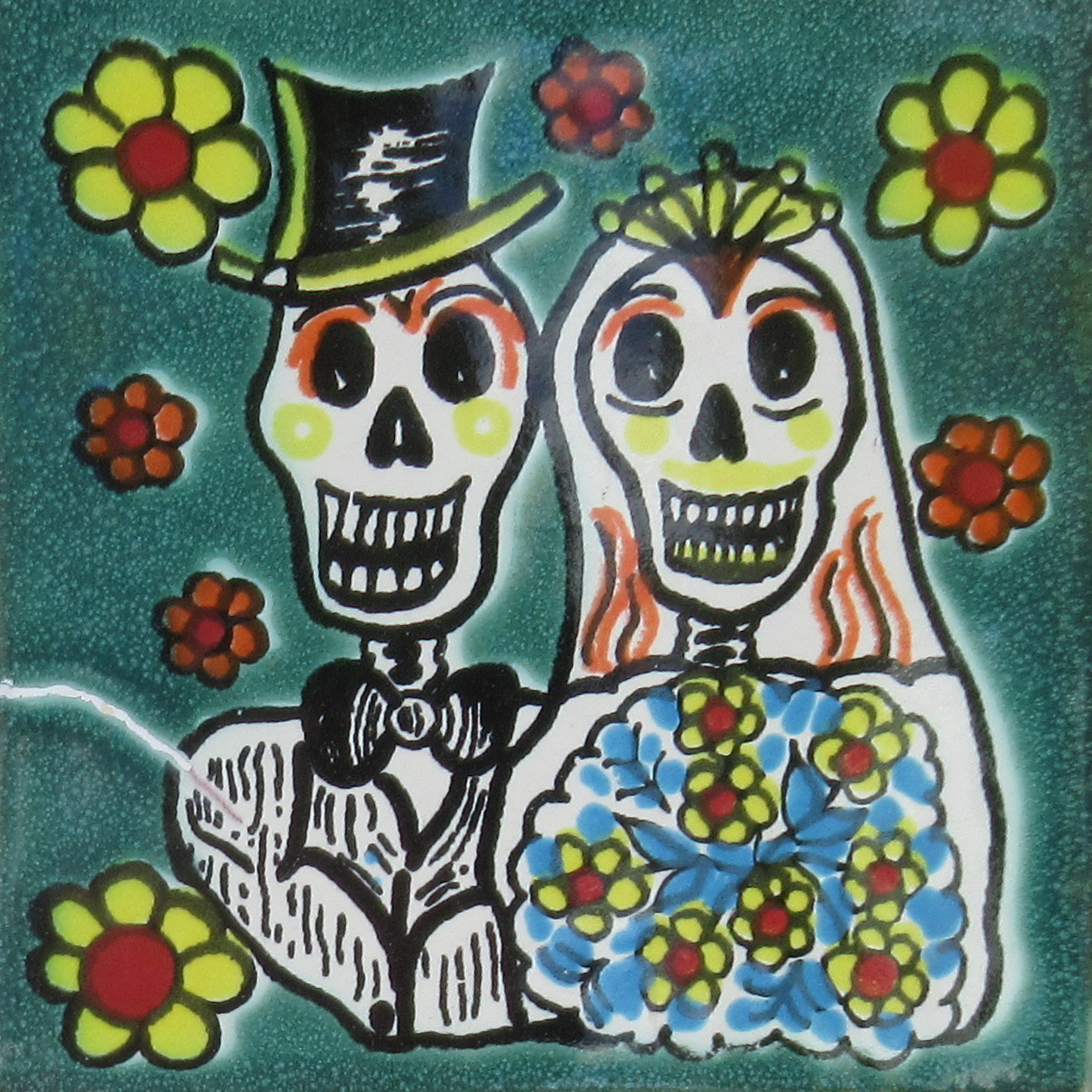
My ode to the calavera (poem)
One other hilarious thing Mexicans do for Day of the Dead is write calaveras or calaveritas (“little poems”) which make fun of someone living! I gave it a shot below:
Don’t bother me
There once was a boy named Steve
Who was born without a pet peeve
Though he tried with his might
To find one – not trite
Even jerks who stood still in escalator left lanes could feel quite at ease
Or this:
The fifth food group
The once was a man who liked candy
For dinner? Why yes! That would be dandy!
He ate and he ate
Til he quadrupled his weight
And no longer fits kid rides at Disneyland-ee!
LISTICLE: SAN MIGUEL DE ALLENDE, MEXICO
Absolutely:
With more than 10,000 full- and part-time U.S. and Canadian expats on hand, there is something to do every single day in San Miguel de Allende. Start at the tourist information center off the Jardin (main square) and ask for the most recent copy of Atención and the Qué Pasa insert, which comes out every Friday. El Pregonero (in Spanish) has a monthly calendar of festivals and cultural events. Below were a few of my favorites:
- Parroquia de San Miguel Arcángel / el Jardin (hang out)
- Jardín Botánico el Charco del Ingenio nature trails
- Free walking tour of centro, 945 am M-W-F at el Jardin
- Escuela de Bellas Artes cultural center events
- Fábrica la Aurora Art Walk first Saturday of each month
Well, OK ... maybe:
These items complete any checklist, so you can tell people that you saw exactly what all the other tourists have seen. But not missing what others have seen is not necessarily the best reason to go to a place. There are several touristy hot springs, including the multi-million dollar Mayan Baths. And you’ll certainly hit one of the artisan markets, like Mercado Ignacio Ramírez. The best thing about going to Cañada de la Virgen? Seeing the impressive countryside.
- Cañada de la Virgen archeological site
- La Gruta or any of the nearby hot springs
- Tianguis de los Martes (Tuesday Market)
- Sunset from the roof of the Rosewood hotel
- Santuario de Atotonilco ("Sistine Chapel" of Mexico)
Dagnabbit!
Even after 17 days in one place, I left San Miguel de Allende with a treasure trove of misses. Logistically, I fell 10 days short of the massive Day of the Dead holidays as my travel dates were dependent upon the workshop and free housing availability. And, as much as I wanted to see Guanajuato, that meant at least three hours in a car (or bus). So, I stuck primarily to activities in and around the historic center, where at least there were always weddings to watch.
- Day of the Dead parade and family celebrations
- Classical music + the arts at Biblioteca Pública (library)
- Day trip to historic Guanajuato city
- Casa de Ignacio Allende home and museum tour
- Museo la Esquina (Mexican Folk Art / Toy Museum)
IN PRACTICUM
GLOBAL ENTRY: Make sense of the Trusted Traveler Network vortex
The U.S. government wants to make it easier for people to get through customs when they travel by air, land and sea, and one of the ways is through the Global Entry: Trusted Traveler Network program. I’ve been a member since 2017, with reasonable results (and low expectations). Basically, Global Entry allows you to skip the lines upon your return to the United States. And that’s about it. It doesn’t get you expedited service on the other end. That is, there are no reciprocal agreements with other nations – at least not yet. For your US$100 and the successful in-person interview, you get a five year membership. TSA Pre clearance membership IS included in the deal. Importantly, everyone in your traveling party needs to have their own membership – no family package deal here.
For non-commercial travelers, here are the four travel programs and their primary purposes / benefits for U.S. citizens and lawful permanent residents only:
- TSA Pre (US$85): Departures from U.S. airports
- Global Entry (US$100): Entry into the U.S. by air, land and sea. Check your eligibility and How to apply. Includes TSA Pre.
- NEXUS (US$50): Entry into the U.S. from Canada by air, land and sea. May include TSA Pre.
- SENTRI (US$122.50): Entry into the U.S. from Canada and Mexico by air and land only. May include TSA Pre.
If you want to really confuse yourself, try to get through the Trusted Travel Network FAQ. A more beneficial page is available from The Points Guy, a credit card reward program guru, who lists these 13 Things to Know about Global Entry. All I know is, at the Montreal airport, being a Global Entry member did nothing to stop the confiscation of my 100% pure Canadian maple syrup – in the highly decorative souvenir leaf-shaped bottle. I’ve learned my lesson.

Example: Arrive Dallas (DFW) from Leon (BJX)
DFW is huge. Memo to self: Be prepared to walk. And ride the people mover train. And walk some more. When I finally did get to the arrival hall, there were three monitors overhead with these wait times at passport control:
- #1: Global Entry: 2 minutes.
- #2: Person with emotional support squirrel: 15 minutes
- #3: Illegal aliens: 37 minutes (!)
The times above are legit. This was at 430 pm on Saturday, October 19. Global Entry gained some street cred today.
QUICK SPINS
(F)UN FACTS: UNESCO World Heritage sites in the good ol' U.S. of A.

When I purchased three copies of the National Park Adventure Guide as gifts in March 2019, little did I know it was two parks short. The latest edition has 61 parks (not 59!), including the most recent additions: Pinnacles in California and Indiana Dunes.
More than 318 million people visited the entire U.S. National Park system in 2018. That’s data from all 418 sites, including parks, monuments, historic sites, battlefields, reserves, seashores, memorials, rivers, parkways, trails and recreational areas. But it’s most common for travelers to tick off “the 61 biggies” one by one, bucket list style, as they make their way around the country.
This got me thinking. When I travel outside the United States, I like to visit historic or significant sites recognized by UNESCO, like San Miguel de Allende. Which made me ask: Are there any UNESCO World Heritage sites in the USA? The answer is a resounding, “Yes!”
There are 24 sites, including 11 cultural, 12 natural and one “mixed” – that’s Papahānaumokuākea off Hawaii. The latest addition (in July 2019) was the “20th-Century Architecture of Frank Lloyd Wright,” which includes eight structures built by the genius.
The good news? Nineteen more U.S. sites are being considered for nomination – something to consider the next time you hit the road.
READER POLL #1:
BOOK: On the Plain of Snakes: A Mexican Journey by Paul Theroux

The great American travel writer and novelist Paul Theroux is at it again with On the Plain of Snakes: A Mexican Journey, published just in time for my trip to San Miguel de Allende. Theroux (pronounced “theh-ROO,” not “theh-ROH,” I recently learned) has written more than 50 books, and this one takes us for a ride along the entire U.S. southern border before delving deep into the land beyond the Rio Grande.
Theroux, now 78, still loves to talk to people, and he’s keen to understand what’s behind the dire headlines of mass migrations and murders – likely to top 35,000 this year (the US total was almost 16,000 in 2018, but that’s for a population of 327 million – 2.5 times that of Mexico).
He spends a lot of time in Oaxaca and Chiapas states, and writes about revolution and the Zapatistas. He also struggles to find a taxi driver brave enough to take him to see worshipers of Santa Muerte (“Saint Death”), the patron saint of those disillusioned with the Mexican government and Catholic Church (e.g. the LGBTQ community, the poor, prisoners etc.). It’s all vintage Theroux, and a compelling read.
EPIC BONUS: Travel writer Rolf Potts has a podcast series called “Deviate,” and in October 2019 he interviewed Paul Theroux: On aging, slow travel and the inherent complexity of Mexico.
READER POLL #2:
INSTA-DAMNED: Is spousal bullying for "Likes" grounds for murder?

It may seem like an innocent march to the Cañada de la Virgen Otomi archeological site about 15 miles outside San Miguel de Allende, but the California woman (circled) in the giant sombrero is about to publicly berate her husband (10 paces behind) for “not getting the shot.”
“My face is supposed to be TINY,” the woman scolded, not shy to shame her husband for his gaff. “You didn’t make the hat look BIG enough! That’s the whole point. To make my face really tiny and the hat GIGANTIC. Don’t you get it? That’s THE shot. Now do it again! And this time GET IT RIGHT!”
The woman, in her 70s, then proceeded to race ahead of the group to the steps of the ruins, husband in tow, so her Instagram followers could see what she had “discovered” all alone on her (private tour from the pricy Rosewood hotel) adventure.
This is, alas, a common site in travel: The person who will do anything for Instagram “Likes.” I call them “the Insta-DAMNED.” And may god help us all.
IF YOU GO: Don’t prepay for a tour ($50-$75). Just take a 30-40 minute taxi or Uber ride the 15 miles from San Miguel de Allende. You can’t visit the site on your own – it’s on private property – but it’s easy to join tours, which are offered nearly every hour until about 4 pm. Arrive before 10 am to join the first one. Pay a small entry fee (like, US$2). Enjoy the little museum. Then simply call another taxi / Uber when you’re ready to head back, after 1.5 to 2 hours max. Or, instead go to the Sanctuario de Atotonilco, the “Sistine Chapel of Mexico” (a UNESCO World Heritage site) or one of the nearby hot springs and make a day of it.
A FEW OF MY FAVORITE THINGS
QUESTIONS OR COMMENTS?
First, thank you for reading this newsletter. If you actually made it this far, and you have any questions at all about anything that appears here, then please do not hesitate to contact me directly via email at: hello@wheresthefunny.blog.



